
As part of phase 2 of the pilot ‘Pollination Optimisation in Apiculture’, Polish beekeepers have been testing the upgraded apiary monitoring system and the DEMETER pollination optimization service since May. During this time, the beekeepers and the heads of the technical teams from PSNC and ControlBee meet regularly to talk about the solution’s usability. We believe that regular user feedback is essential to creating a solid solution.
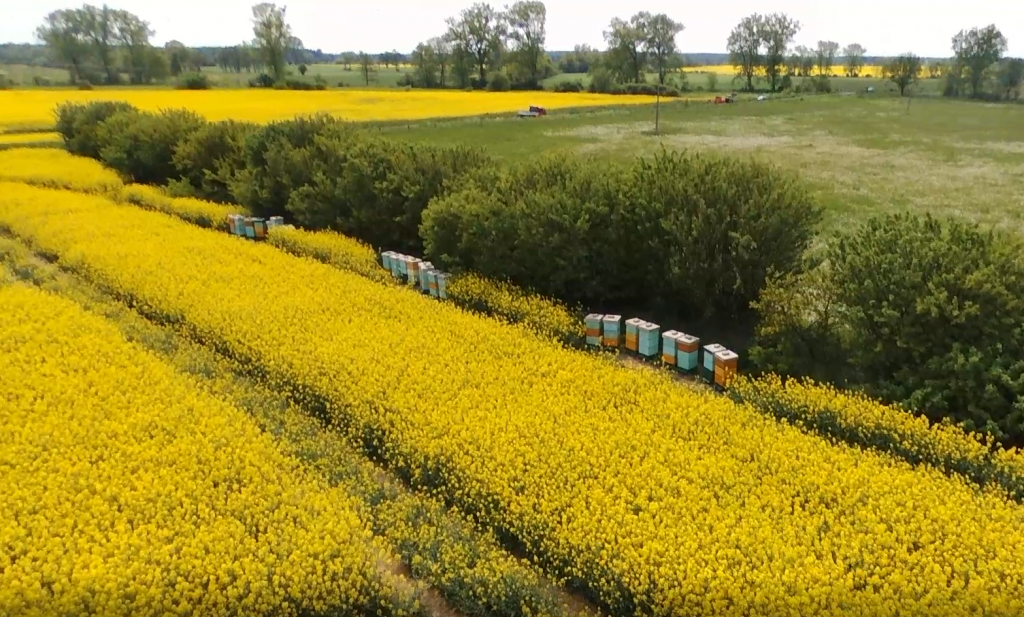
An overview of the pilot
This pilot aims to improve the monitoring of mobile apiaries to provide decisive information and support cooperation between farmers and beekeepers to protect bees and optimise the pollination of crops (See the pilot description). The pilot involves three different activities. To help beekeepers better oversee apiaries placed on farmers’ fields for pollination purposes and study beehives over the winter, we are first building a technology that supports remote monitoring of apiaries to make use of and improve the ControlBee IoT (Internet of things) system’s pilot for this. Secondly, we are developing a data exchange platform for apiary and agricultural management systems used by farmers and beekeepers, called a pollination optimization service. The pollination optimization service is the core part of the pilot solution providing a unified communication mechanism (via programming API) for farm and apiary management systems. It allows for management and exchange of the beekeeping and farm information important for pollination, including apiaries’ real-time location, hives data (e.g. weight), and farming activities like planned sprayings (based on the information from farmers). Finally, we will integrate a Polish nationwide farm management system to exchange information via the pollination service. The eDWIN Virtual Farm management system, developed jointly by WODR and PSNC, is part of a new national Internet Platform of Consulting and Decision Support in Integrated Plant Protection, released this year.

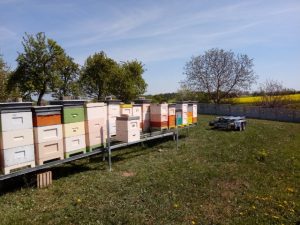
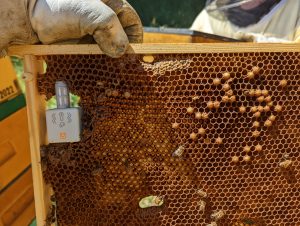
Beekeepers perspective
On the beekeepers’ side, in the pilot we improve, integrate, and test the ControlBee system for apiary monitoring. The goal is to enable better remote monitoring of mobile apiaries to support the beekeepers in managing hives and taking care of bees’ welfare. Four beekeepers have been deeply involved in the testing and collaborative development of the apiary monitoring solution and pollination optimisation service since the start of the project.
Ongoing works
Currently, we are in the second piloting phase of testing the pollination scenario. Beekeepers are evaluating the second iteration of the devices after the hardware solution for apiary monitoring was revised based on input from the first pilot round. Each apiary has an apiary control unit, hive scale, shock and humidity sensor, autonomous shock sensors with GPS position, and 25 shock and temperature sensors. Solar panels are attached to the equipment to enable continuous operation of the hardware solution without the need to recharge the battery. The beekeepers are testing the new features, e.g. weight monitoring and exchanging data with farm management systems.

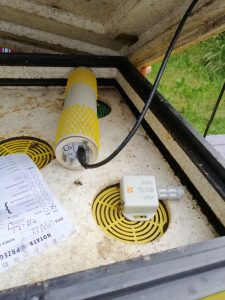

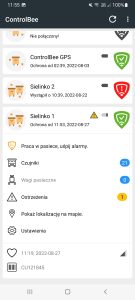
Beekeepers feedback
To discuss the experience with the solution and possible improvements, since the start of the second piloting phase we have regular, online or offline, meetings about once a month. Thanks to the feedback received from beekeepers, we are now adjusting the rules for issuing invitations and accepting or rejecting pollination offers. Also, instead of simply notifying beekeepers about additional sprayings, we are focusing on alerting farmers about apiaries near crops so that they can adjust their plans to apply plant protection products appropriately, such as by changing the date of sprayings. In addition, the UI design is being refined based on beekeeper feedback, such as how to visualise spraying information to allow beekeepers to assess the possibility of an impact on the apiary
The next steps
Beekeepers are now getting ready for the winter season. The next meeting planned for the end of September will concern the discussion of the appropriate location of sensors for monitoring hives during the winter. There are very important decisions ahead of us because during winter it will not be possible to change anything in the hive configuration.
___________________________________________________________________________________
 This article was written by Alicja Laskowska, a senior IT specialist at the Poznan Supercomputing and Networking Centre. She earned an M.Sc. in computer science (software engineering) from Poznan University of Technology and completed the Top 500 Innovators Program at Berkeley’s Haas School of Business. Her research interests and expertise include requirements and software engineering, interoperability, and usability. She has actively participated in several national and European projects in a variety of domains, including open source, future internet technologies, industry 4.0, smart cities, and smart farming. She oversees the DEMETER pollination optimization pilot.
This article was written by Alicja Laskowska, a senior IT specialist at the Poznan Supercomputing and Networking Centre. She earned an M.Sc. in computer science (software engineering) from Poznan University of Technology and completed the Top 500 Innovators Program at Berkeley’s Haas School of Business. Her research interests and expertise include requirements and software engineering, interoperability, and usability. She has actively participated in several national and European projects in a variety of domains, including open source, future internet technologies, industry 4.0, smart cities, and smart farming. She oversees the DEMETER pollination optimization pilot.


